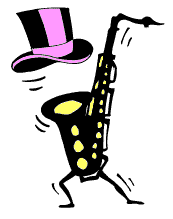The new elements introduced during this period are articulation and entering the Middle register.
Articulation
After about 4 to 6 weeks I start the student on tongue articulation (see Lesson 7).
- First very basic "daaaa" legato exercises,
- then after a while "daaat" and "dit" staccato exercises.
It is most important to get the four basics steps established right from the start. This puts the student on track for a lifetime of good clean articulation.
Once the student is comfortable with the above I start to put real pressure on the application of correct articulation.
- Where there is a slur in the music notation - the notes are slurred,
- where there is not - a legato tongue is used,
- where there is a staccato - the students must play this.
When playing articulation pieces I stop the student at every mistake. It is amazing how quickly this gets good results.
I was subjected to this approach myself after 3 years of rather sloppy playing. It took me once a full one and a half hour lesson to complete just one line of music (from the left to the right of the page) correctly.Reading and playing from sheet music correctly also dramatically improves the quality of improvisation or playing by ear.
- A player with good reading skills is always aware of good articulation and the correct length of each note, and will (consciously or sub-consciously) carry over these good habits in all ad lib solos.
- A player only capable of playing by ear usually lacks the professional awareness of correct articulation and note length. This results in sloppy solos that are devoid of definition and energy.
Middle register
After 4 to 6 weeks I start the student on a few scales that reach into the middle register. First the major scale of D, then F and G.
 These scales reach gradually towards higher pitches.
These scales reach gradually towards higher pitches.
They also, most importantly, provide three different fingering 'routes' to enter the middle register.
- D major scale : B - C# - D
- F major scale : A - sBb - mC - D
- G major scale : B - sC - D
I spend much effort here to get the proper left thumb action firmly established. If you don't do this now it will be very very hard to correct later.At this stage I introduce the student also to the fingering rules for the C and Bb. I am rather firm about using the correct C fingerings. The exercise in Lesson 8 is most useful here.